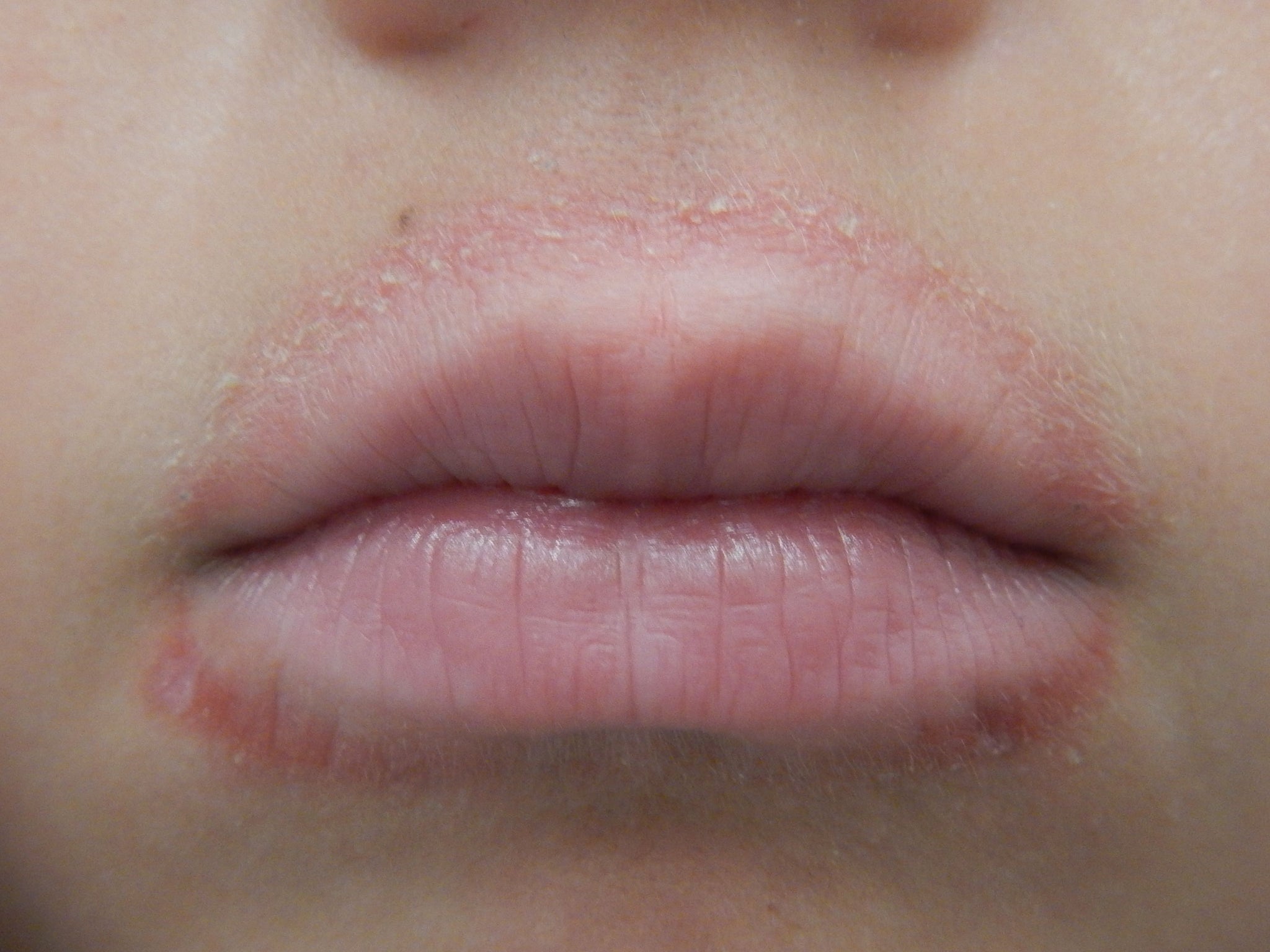Innovative Non-Toxic Skin Healing Solutions

by Dr. Stacy Matthews Branch and Dr. Nasime Yazdani
An age-old common childhood consequence of repeated lip-licking may be familiar to many. I recall that during the age of 8, I had a relentless cracking skin irritation right over and arching the top lip. Adults would say, “stop licking”, and I would be in anguish thinking “I can’t.” The only minute-long relief from the irritating feeling from the cracking and dryness was to lick it again, then again. This common form of childhood lip eczema that can occur on or around the lips is often referred to as lip licker’s dermatitis (1), perioral dermatitis, eczematous cheilitis, or contact eczema.
Childhood lip eczema typically looks like red, cracked skin with raw areas within the cracking skin, and pigmentation changes can also occur. When at the top of the lip, it’s not uncommon to see an arc of dermatitis or sores that form into the shape of a mustache. The redness, fissures, scaling, and crusting are a result of damage to the skin’s epidermal barrier causing inflammation. Lip eczema can also itch but not in all cases. The initiating triggers are not always identified, and some common culprits are facial soaps and lotions, food ingredients, habitual licking, or even anxiety. In the case of habit or anxiety/nervousness, the saliva itself is the irritant. Even after the trigger is removed, the irritation may still lead to continued licking in an attempt to relieve the discomfort when the affected areas dry. This creates a vicious cycle that can last weeks or months and requires a safe and effective solution.
The goal to treat lip eczema in a way that will allow the quickest possible healing without creating other problems due to medicine side effects is a challenge for parents and providers alike. For this healing to begin, the child must stop licking the lips. This can be accomplished by applying moisture that the licking attempts to provide (2). Depending on the case, a doctor may prescribe an antibiotic if an infection has developed in the damaged skin.
A healthy skincare routine is also paramount. Caregivers must be sure to avoid the common tendency to apply corticosteroids such as hydrocortisone creams (3). This type of treatment will only make matters worse by increasing the problem of dryness, redness, and irritation, particularly when applying to the face. You must also read all labels of lip emollients and steer clear from toxic chemicals and common irritants like lanolin, fragrance and harsh preservatives. MatrX B Post-Traumatic Response Gel, containing natural substances with antioxidant and anti-inflammatory properties can relieve skin dryness and help restore it to a healthy state. Apply a thin layer of gel onto children’s lips once in the morning and before bedtime followed by a moisture barrier cream such as organic coconut oil or shea butter for a total of two weeks.
References:
Comments will be approved before showing up.